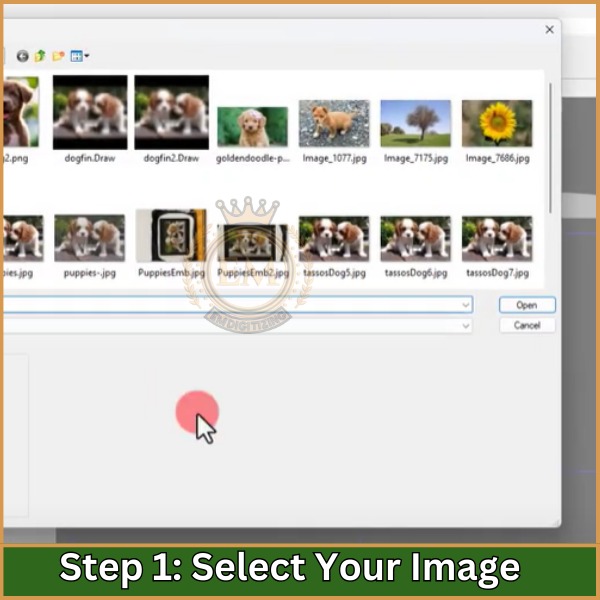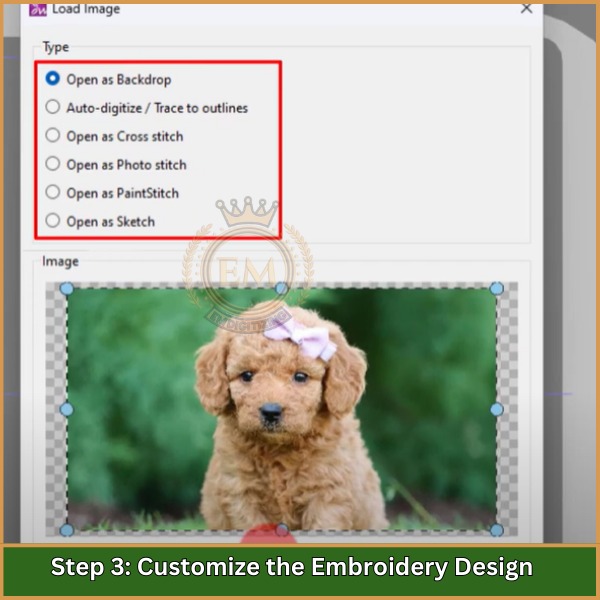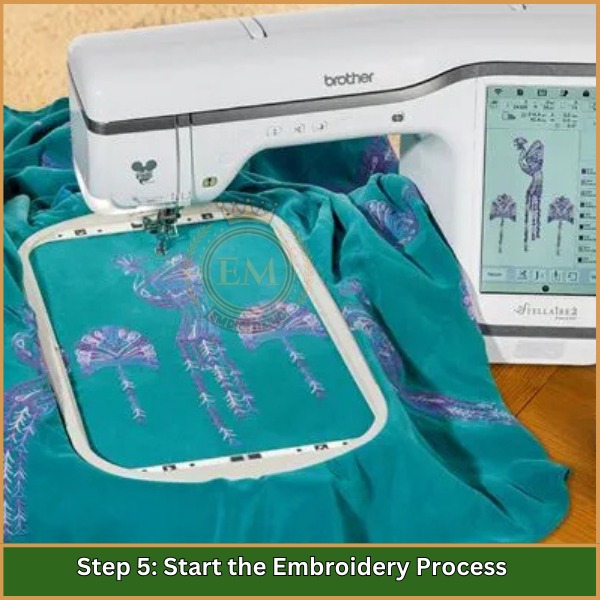Avez-vous déjà pensé à rendre vos projets de broderie plus réalistes ?, art parfait? La broderie photoréaliste consiste à capturer chaque petit détail, mélanger les couleurs de manière transparente, et ajouter de la profondeur à vos créations. It goes beyond basic stitching techniques, requiring a sharp eye and careful attention to shading and texture.
Dans cet article, we’ll walk you through the essential steps, outils, and tips to help you master this technique. Whether it’s for portraits, nature scenes, ou des motifs complexes, this embroidery will bring your designs to life!

Réaliser une broderie photoréaliste: Un guide étape par étape
Essential Materials for Photorealistic Embroidery
To achieve photorealistic broderie à la machine, having the right materials is key. Below is a list of essential items you’;ll need for the best results.
- Tissu: Choose stable fabrics like cotton or specialty fabrics like velvet for unique textures.
- Stabilisateurs: Use cut-away, arracher, or wash-away stabilizers to support your fabric during embroidery.
- Machine à broder: A machine capable of handling intricate designs and multiple thread colors.
- Fil à broder: Use rayon or polyester threads for vibrant colors and a shiny finish.
- Logiciel de broderie: Convert images to embroidery designs and adjust stitch settings.
- Aiguilles: Select based on fabric type—ballpoint for knits, sharp for woven fabrics.
- Cerceaux et cadres: Secure fabric and stabilizers with various hoop sizes for different projects.
- Miscellaneous Supplies: Scissors for trimming threads, fabric markers, or chalk for marking fabric.
Create Photorealistic Embroidery from Images: Processus étape par étape
Cela nécessite une planification minutieuse, les bons outils, and precise techniques to achieve stunning, Résultats de haute qualité.
Marcher 1: Select Your Image

Choose a High-Resolution Photo: Pick an image with sharp details and vibrant colors. Portraits and nature scenes are excellent choices for photo numérisation to achieve a realistic result.
Marcher 2: Prepare the Design for Embroidery

Import the Image into Embroidery Software: Use software like PaintStitch or DRAWings PRO XII to upload your image.
Convert the Image: The software will help you digitize the image by converting it into an embroidery-ready format. Adjust color palettes and stitch density for precise detail.
Marcher 3: Customize the Embroidery Design

Modify Colors and Stitch Density: Match the thread colors to your image, adjusting the number of colors and stitch density to achieve clarity and detail.
Preview the Design: Vérifiez à quoi ressemblera le design lorsqu'il est cousu. Make any necessary changes before proceeding.
Si you’;re unsure about this step, you can have your design digitized by us. We’;ll adjust the color density and stitch settings according to your specific design, ensuring professional, Résultats de haute qualité. We offer affordable services with fast turnaround and guaranteed quality.
Marcher 4: Configurer la machine à broder

Encerclez le tissu et le stabilisateur: Secure your fabric and stabilizer in the hoop, ensuring they are smooth and tight.
Load the Embroidery Design: Transfer the digitized design into the machine and follow the instructions to thread it properly.
Marcher 5: Démarrer le processus de broderie

Begin Embroidering: Start the stitching process. The machine will notify you when to change threads as needed. Monitor closely for any issues like thread breaks or bunching.
Marcher 6: Touches finales

Retirez le stabilisateur: Une fois la broderie terminée, carefully remove any remaining stabilizer by tearing or washing it away.
Inspect and Make Adjustments: Check for loose threads or small imperfections and make any necessary touch-ups.
Marcher 7: Finish and Display

Frame Your Embroidery: Si on le désire, frame your finished piece, making sure it’s centered and secure.
Tips to Achieve Photorealistic Details in Embroidery
Here are some effective tips to help you create photorealistic details in your projets de broderie:
- Incorporate Textures: Apply different stitch types to create texture, adding a 3D effect that enhances realism.
- Use Gradient Stitches: Vary stitch length and density to replicate natural gradients and shading in the design.
- Blend Colors Gradually: Use a combination of thread colors to smoothly transition between shades, creating depth and dimension similar to a painting.
- Adjust Stitch Direction: Change stitch angles to follow the natural lines and contours of the design, giving it a more authentic appearance.
- Manage Thread Density: Adjust the density of stitches to avoid overly thick or sparse sections, ensuring a smooth and balanced look.
- Use High-Quality Threads: Choose durable, high-quality threads that offer a wide range of colors to achieve realistic shading and smooth transitions.
- Simplify Complex Details: Reduce unnecessary or overly detailed parts of the design for a clearer, cleaner result in the final embroidery.
Key Errors to Avoid for Perfect Embroidery Photorealistic
Here are a few crucial mistakes you should steer clear of when working on this embroidery:
- Using Excessive Colors: Adding too many thread colors can overwhelm the design, leading to a cluttered and unnatural look.
- Neglecting Image Simplification: If the image is overly detailed, it can lose clarity during embroidery. Simplifying the design ensures a cleaner result.
- Inconsistent Stitch Density: Uneven density can cause the design to look patchy. Keep stitch density consistent for smoother transitions.
- Ignoring Proper Stitch Angles: Not adjusting the stitch direction to follow the design’;s shape can make the embroidery look flat and unrealistic.
- Selecting Inferior Thread Quality: Low-quality threads can break easily and affect the overall appearance with inconsistent colors.
- Choosing the Wrong Fabric or Stabilizer: Inappropriate fabric or backing can cause distortions, such as puckering, élongation, or wrinkling.
Avoid these errors to ensure your embroidery turns out smooth, détaillé, et professionnel.
Wrapping It Up
Creating photorealistic embroidery may seem challenging at first, but with the right techniques, you can bring any image to embroidery with stunning detail. By focusing on color blending, texture, and precise stitching, you can turn simple images into realistic works of art that will impress anyone.
If you’;re looking to save time on digitizing your designs, laisser Numérisation EM aide! We offer fast digitizing photo service, top-quality results, and pricing that fits your budget. Plus, if you’;vous êtes un premier client, tu auras 50% de réduction sur votre première commande. Get your designs digitized quickly and affordably, and start stitching your masterpieces today!
FAQ
To make a picture look embroidered, digitize it using specialized software to convert it into a stitch file, then embroider it onto fabric using an embroidery machine for a realistic stitched appearance.
Transform an image into an embroidery design by utilizing digitizing software to convert the image into stitch data, adjusting parameters like stitch density and direction to ensure quality embroidery results.
Embroider is like a pro by mastering digitizing techniques, selecting appropriate stabilizers and thread, maintaining tension, and practicing precise hooping and stitching for professional-quality results.
